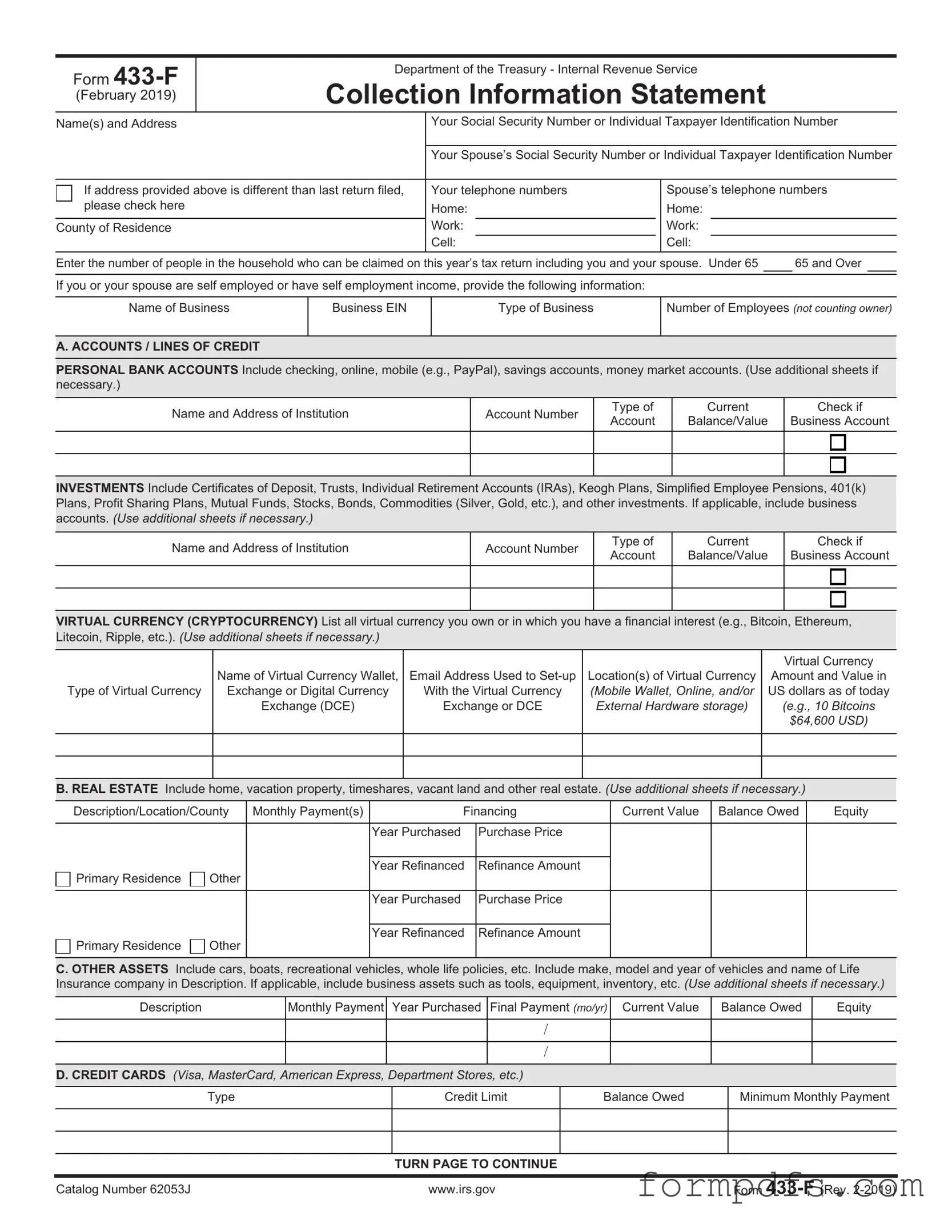What is the IRS 433-F form?
The IRS 433-F form, also known as the Collection Information Statement, is a document used by the Internal Revenue Service to collect financial information from individuals and businesses. This form helps the IRS assess a taxpayer’s ability to pay their tax liabilities. It requires detailed information about income, expenses, assets, and liabilities. Completing this form accurately is crucial, as it can influence the IRS’s decision regarding payment plans or offers in compromise.
Who needs to fill out the IRS 433-F form?
Typically, individuals or businesses that owe taxes and are seeking to establish a payment plan or negotiate a settlement with the IRS need to complete the IRS 433-F form. This includes those who have received a notice from the IRS regarding their tax debt or are unable to pay their taxes in full. It is essential for anyone in this situation to provide a truthful and comprehensive account of their financial situation to facilitate a fair assessment by the IRS.
How do I complete the IRS 433-F form?
To complete the IRS 433-F form, you will need to gather various financial documents. Start by listing your income sources, including wages, self-employment income, and any other earnings. Next, detail your monthly expenses, such as housing, utilities, and transportation costs. You will also need to provide information about your assets, like bank accounts, real estate, and vehicles, as well as any outstanding debts. It is advisable to review the form thoroughly to ensure all information is accurate and complete before submission.
What happens after I submit the IRS 433-F form?
Once you submit the IRS 433-F form, the IRS will review the information provided to determine your financial situation. This review process may take some time, during which the IRS might contact you for additional information or clarification. Depending on the assessment, the IRS may propose a payment plan, accept an offer in compromise, or suggest other options for resolving your tax debt. It is important to respond promptly to any communications from the IRS during this time to ensure a smooth resolution of your case.
